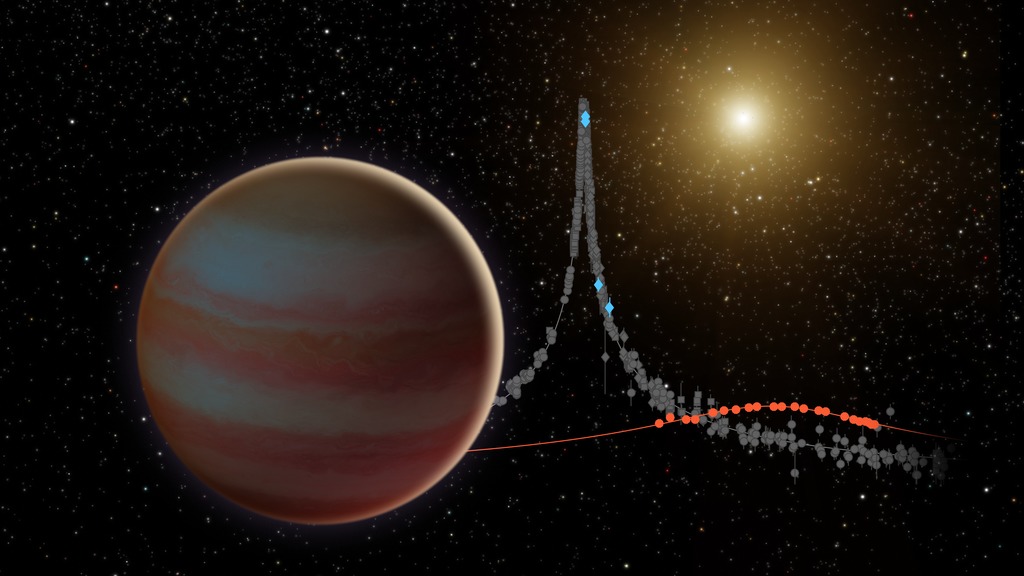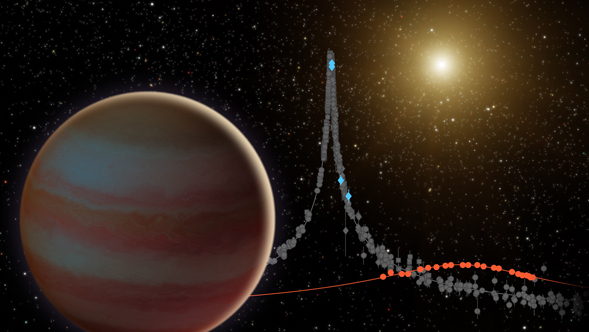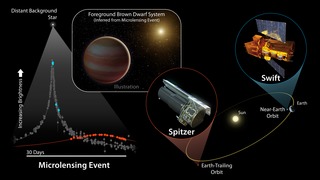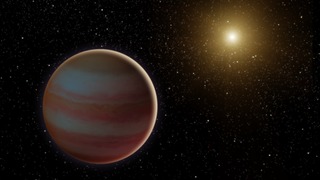
Credit: NASA/JPL-Caltech/Y. Shvartzvald (JPL)
Collage • November 10th, 2016 • sig16-20
sig16-20
This illustration depicts a newly discovered brown dwarf, an object that weighs in somewhere between our solar system's most massive planet (Jupiter) and the least-massive-known star. This brown dwarf, dubbed OGLE-2015-BLG-1319, interests astronomers because it may fall in the "desert" of brown dwarfs. Scientists have found that, for stars roughly the mass of our sun, less than 1 percent have a brown dwarf orbiting within 3 AU (1 AU is the distance between Earth and the sun).
This brown dwarf was discovered when it and its star passed between Earth and a much more distant star in our galaxy. This created a microlensing event, where the gravity of the system amplified the light of the background star over the course of several weeks.
This microlensing was observed by ground-based telescopes looking for these uncommon events, and was the first to be seen by two space-based telescopes: NASA's Spitzer and Swift missions. The background data plot shows how the stars brightness evolved over time. The ground-based data is shown in grey, Swift with blue diamonds, and Spitzer with red circles.
About the Object
- Name
- OGLE-2015-BLG-1319
- Type
- Star > Type > Brown Dwarf







